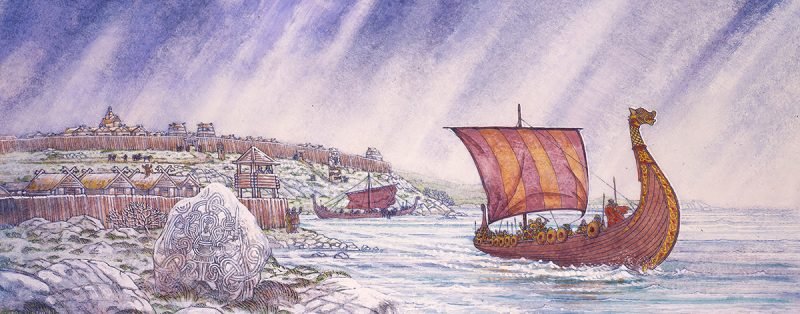The Irish Art of Jim FitzPatrick 2022
I’ve never done a Saint Patrick’s Day post for the DMR Books Blog.* I did one for The Cimmerian blog years back on Robert E. Howard, but nothing since. The time seemed right this year to take a look at the Irish art of that most Irish artist, Jim FitzPatrick. While I’ve written several blog entries that featured FitzPatrick’s work prominently, I’ve only written one actually devoted to his art and that was for my ‘Painting Metal’ series a few years ago. Time to write up another.
Jim was born in Dublin, but the ancient roots of both sides of his family lie in the west of Ireland. That would be the part of the island where the Gaelic Irish were exiled by Oliver Cromwell: "To Hell or Connacht!" The same region whence Robert E. Howard derived almost all of his Irish heroes, whether they were Cormac na Connacht, Turlogh Dubh, Black Vulmea or John Kirowan.
FitzPatrick grew up hearing Irish legends from his kinfolk who had heard the same tales from their kinsmen and forefathers. His grandfather was a political cartoonist, so ‘recent’—at that time—Irish history was a living thing in the FitzPatrick household as well. All of this made Jim uniquely qualified to illustrate the entire history of Ireland as the Irish have told it to themselves for over four thousand years. For the last half-century and more, FitzPatrick has done just that.
Considering the holiday, I've selected FitzPatrick art for the brief gallery below that spans the last fifteen hundred years. It is just a small slice of Jim's overall body of work. Much, much more can be found at his website here.
FitzPatrick’s rendition of Saint Brendan’s voyage amidst the icebergs of the northern seas. Brendan appears to have been one of Robert E. Howard’s favorite saints.
Skellig Michael, the setting of the first Felimid mac Fal tale I ever read. It has also served as a location in a recent ‘Star Wars’ movie.
The Cliffs of Moher aren’t far north from where Brendan launched his voyage. When I was there in November of 2002, the weather was so foggy that it was like being on an island amid a sea of clouds. You could hear the surf pounding below, inexorable.
Viking Dublin, before Brian Boru showed up.
Brian Boru—one of the historical figures most admired by REH—and his final wife, the sexy but malevolent Gormlaith.
Brian Boru on the eve on the Battle of Clontarf. This was originally production art for a film adaptation of Morgan Llywelyn’s Lion of Ireland that was never made.
Snow, a fox and an Irish dolmen. A beautiful scene that could’ve taken place anytime in the last four thousand years.
Built in 1520, Dunguaire Castle is on the Galway coast. Black Vulmea was surely familiar with it. While I saw it in passing during my Irish trip in 2002, I didn’t visit or tour the grounds. The site served as a significant meeting place for Irish intellectuals and revolutionaries in the late 1800s. It is, apparently, the most photographed castle in Ireland.
FitzPatrick’s portraits of numerous figures from the Irish Revolution. Jim’s own grandfather was active during this period.
If anyone knows of another artist who has illustrated thousands of years of his nation’s history so thoroughly and with this level of quality, feel free to let me know in the comments.
Slainté!
*Actually, I did an A. Merritt-centric post on the subject a couple of years ago. I just now recalled it. It can be found here.










